Viktor & Rolf dresses models in wearable paintings during Paris couture show
Dutch fashion designers Viktor & Rolf transformed broken picture frames filled with fabric into haute-couture gowns during their latest catwalk show, by taking them off a wall and draping them over models.
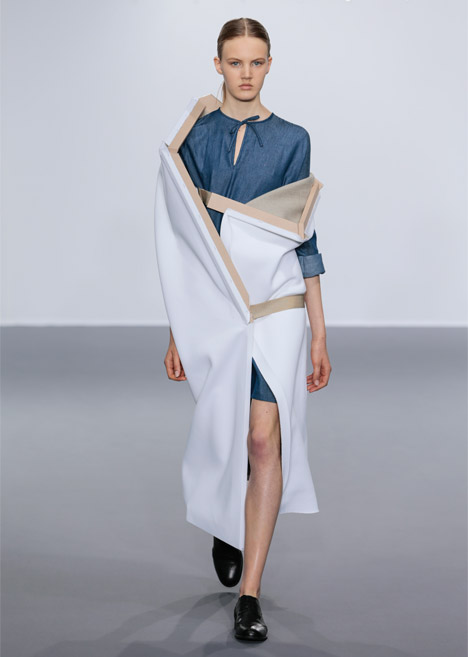
The Wearable Art collection was shown at the mezzanine space of Palais de Tokyo during Paris' Haute Couture Autumn Winter 2015 fashion week yesterday.
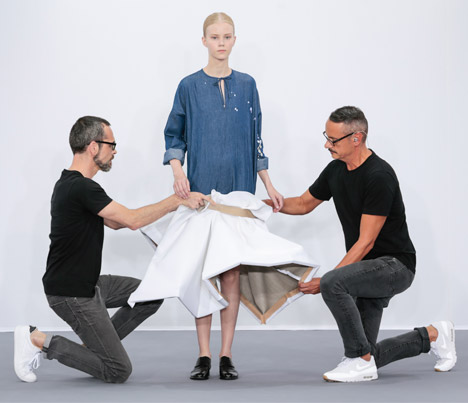
Viktor Horsting and Rolf Snoeren, who founded the Amsterdam-based fashion house, took to the catwalk to assist with completing the outfits in the collection live.
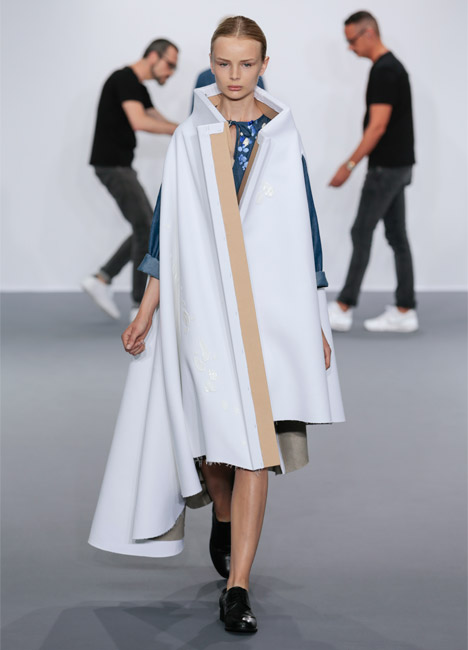
One by one, "paintings" hung on a partition at the back of the stage were unhooked by the duo.
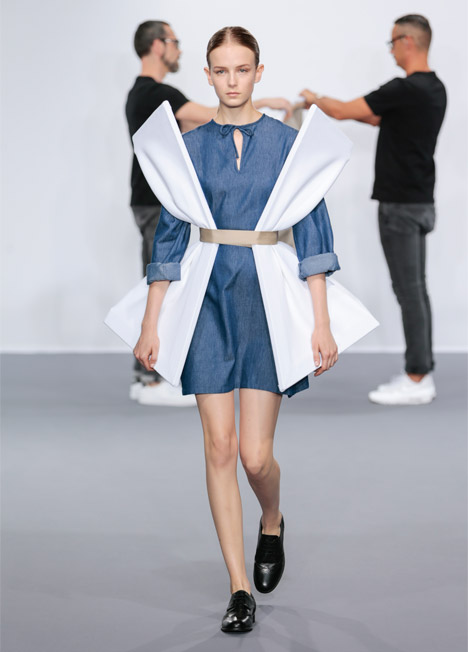
They reconfigured the sections of gilded frames and materials onto the models, lifting the pieces over their shoulders or up their legs in front of the audience.
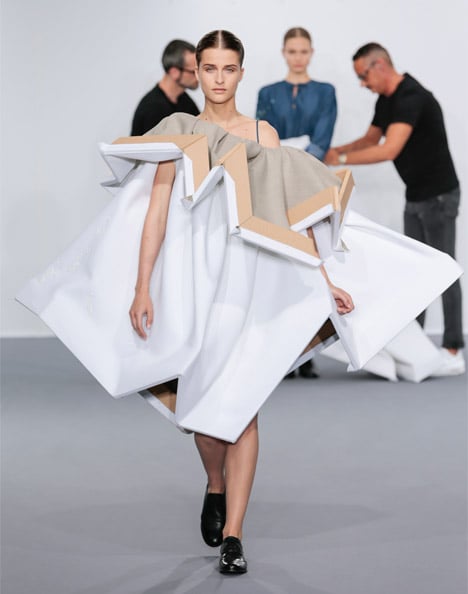
The frames formed exaggerated silhouettes over simple paint-splattered denim dresses with rolled-up sleeves, designed to look like artists' shirts.
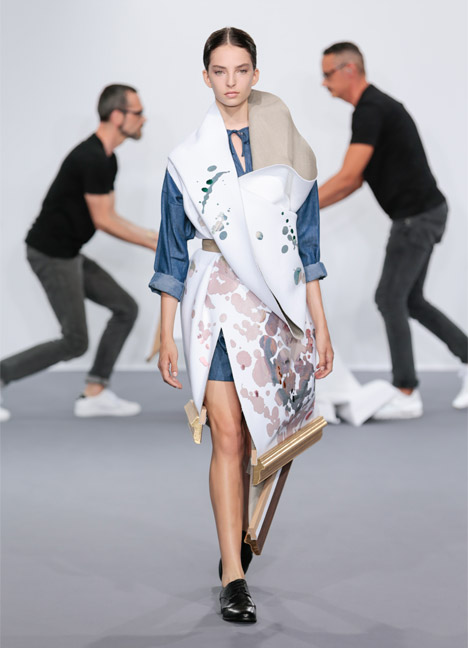
"Art comes to life in a gallery of surreal proportions," said Viktor & Rolf's show notes. "A dress transforms into an artwork, back into a dress and into an artwork again. Poetry becomes reality, morphing back into fantasy."
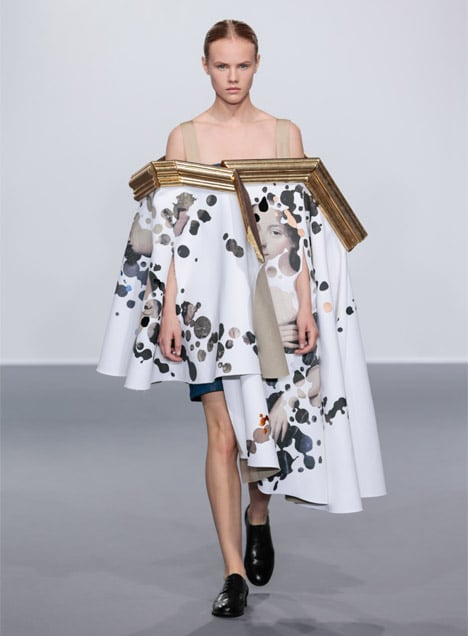
The garments at the beginning of the show were blank canvases, made from white fabric shaped with wooden batons around hems and collars.
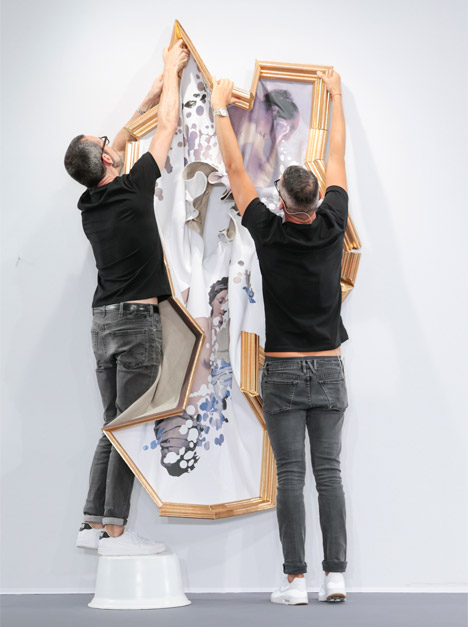
Skirts, dresses and capes were all created from the heavy material, held up with gold-coloured waistbands or resting over the shoulders.
The structures of the frames resulted in loose pleats and layers of material.
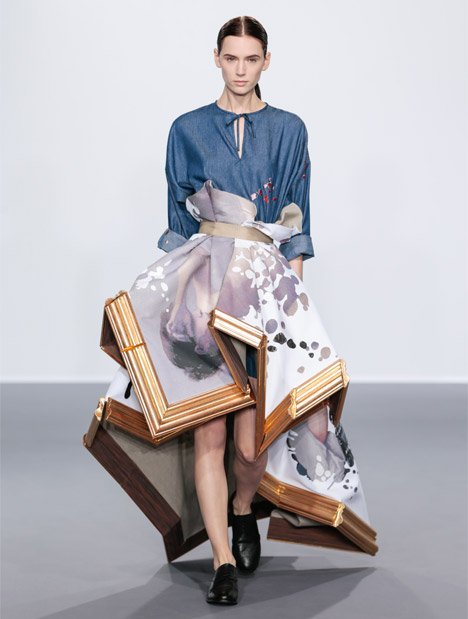
Throughout the presentation, the fabric of each outfit became more heavily patterned – decorated with images based on Dutch Golden Age paintings of the 17th century.
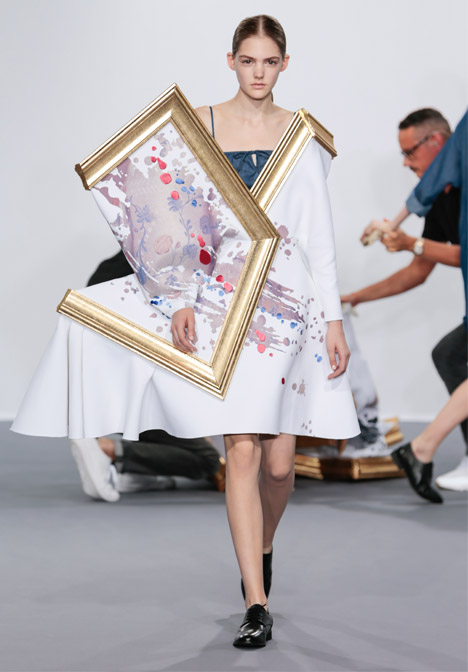
"The painterly gesture is achieved through trompe l'oeil techniques: each artwork is executed in a complex layering of laser-cut jacquards, embroideries and appliqués," said Viktor & Rolf.
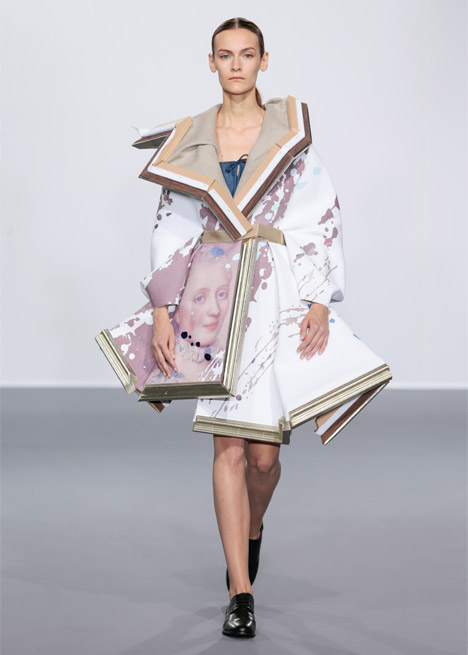
Swans, portraits, nudes and still lifes – created in the style of artists such as Johannes Vermeer and Frans Hals – could be spotted as motifs.
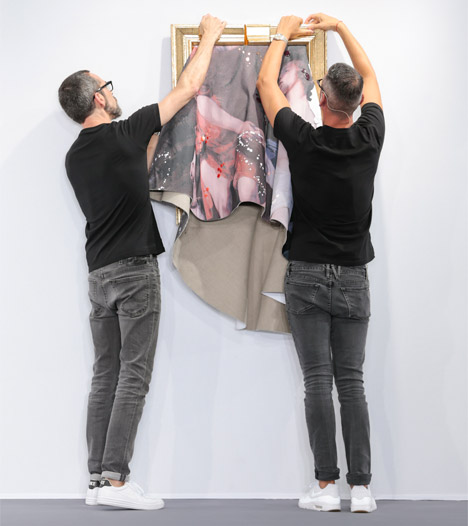
"Intricate motifs parade the catwalk, transforming Golden Age paintings with the rawness and spontaneity of action painting," the designers said.
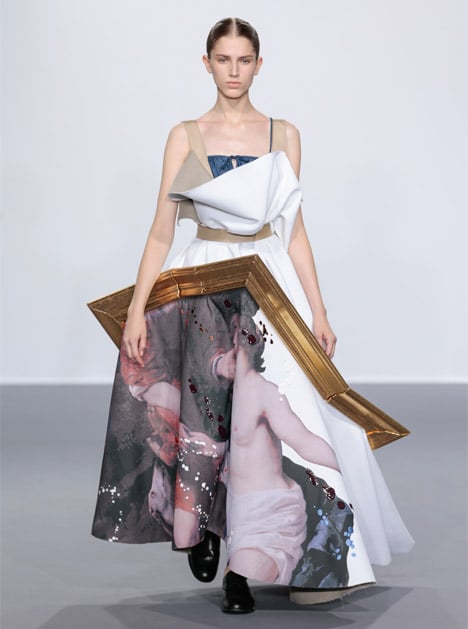
The shapes of the garments also became more extravagant as the show progressed.
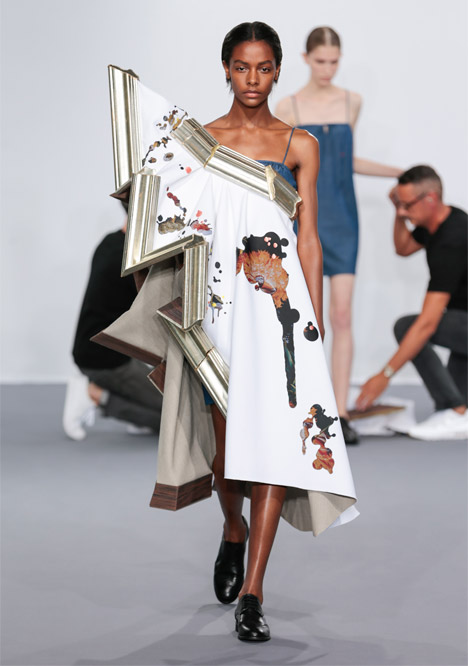
Using the frames as support, material was thrust out horizontally from the shoulders and the hips of different dresses.
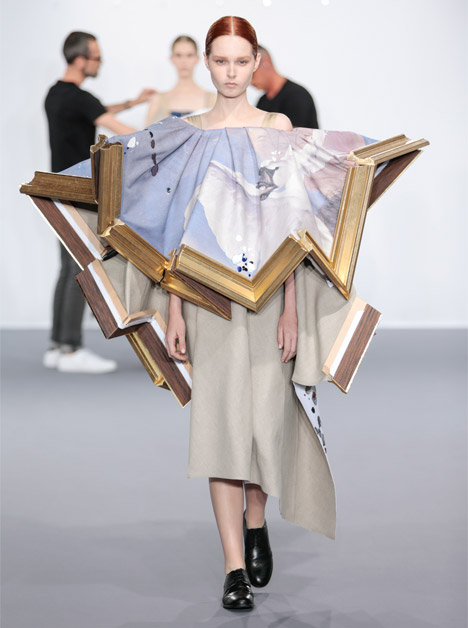
In some places the beige underside of the material was revealed, aiming to reinforce the idea of clothing-artwork hybrids.
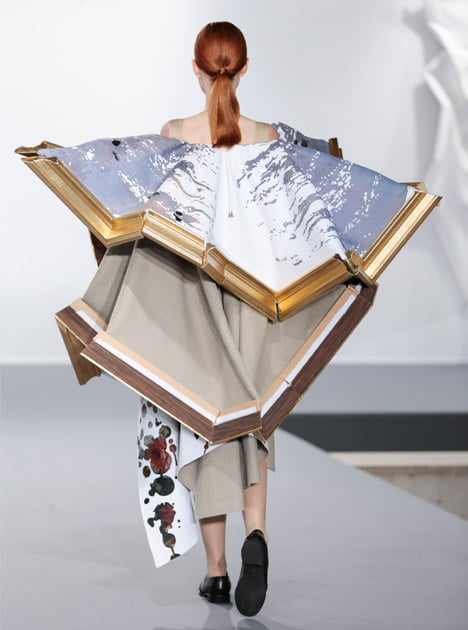
One of the final dresses featured a giant collar and a zig-zagging hem that stretched out and up to one side, displaying fabric decorated with a still-life image of fruit.
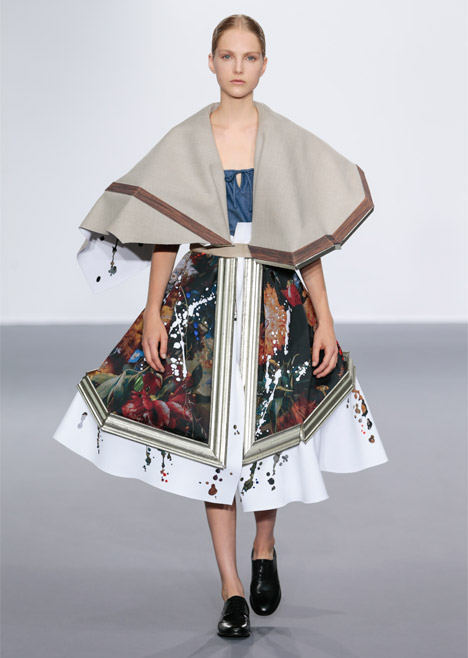
After the show, Dutch art collector Han Nefkens acquired one of the pieces to donate to the Museum Boijmans Van Beuningen in Rotterdam.

The collection builds on the art references of the duo's Spring Summer 2015 haute-couture collection, in which floral gowns and straw head dresses were based on paintings by Vincent van Gogh.
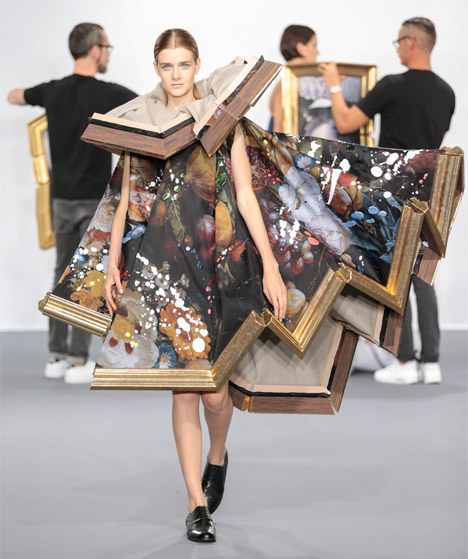
Transforming outfits on the catwalk is an idea also used by British designer Hussein Chalayan, who presented two-in-one dresses that converted with a single tug during his Autumn Winter 2013 show.
This season's Haute Couture fashion week in Paris took place from 5 to 9 July 2015.